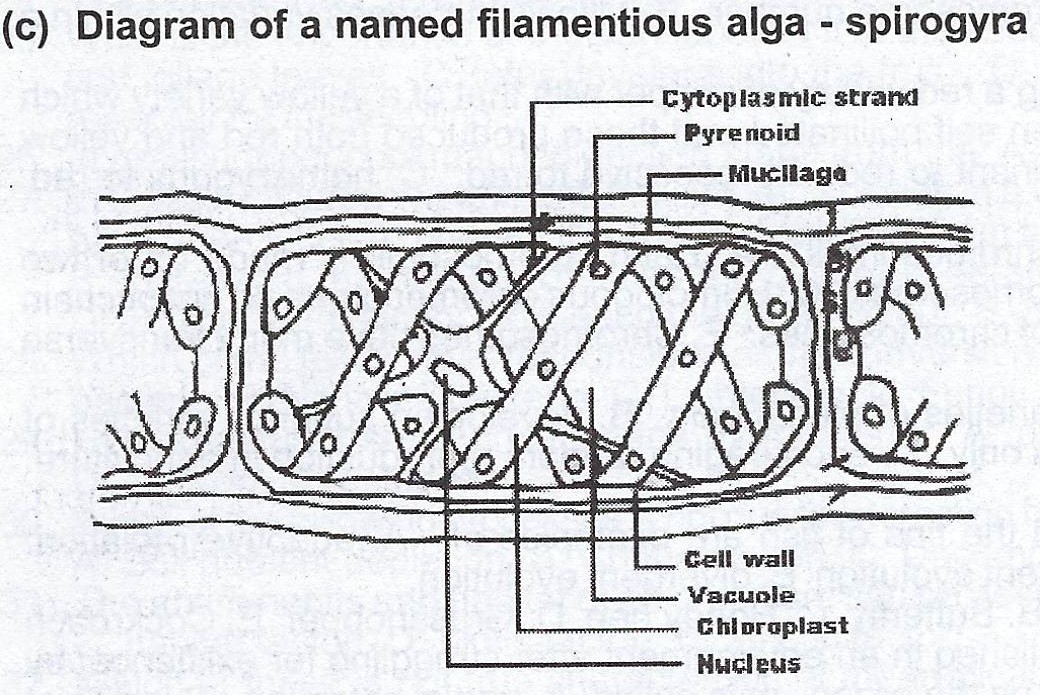(a) State two advantages of complex structural organisation in higher organisms.
(b) (i) List two differences between colonial organisms and filamentous organisms.
(ii) Give one example each of a colonial organisms and a eke filamentous
(c) Make a labelled diagram 10 – 12 cm long to show the structure of a named filamentous alga.
.
Explanation
(a) The advantages of complex structural organisation in higher animals are:
(i) There is cellular differentiation or group of similar cells differentiate to form tissues that carry out similar functions.
(ii) Differential leads to internal structural specialization or the group of similar cells or tissues becomes specialised to carry out one or more functions.
(iii) It increases adaptation to environment.
(v) It leads to mutual interdependence between component cells or division of labour by component cells which leads to efficiency and increase in size.
(b)(i) Differences between colonial organisms and filamentous organisms are:
| Colonial organism | Filamentous organisms |
|
-Intercellular cell-wall is absent
|
-Inter-cellular cell-wall is present.
|
(ii) Examples of a colonial organisms are:- Pandorina / Volvox while that of filamentous organism is Spirogyra / Zygnema / Oscillateria


